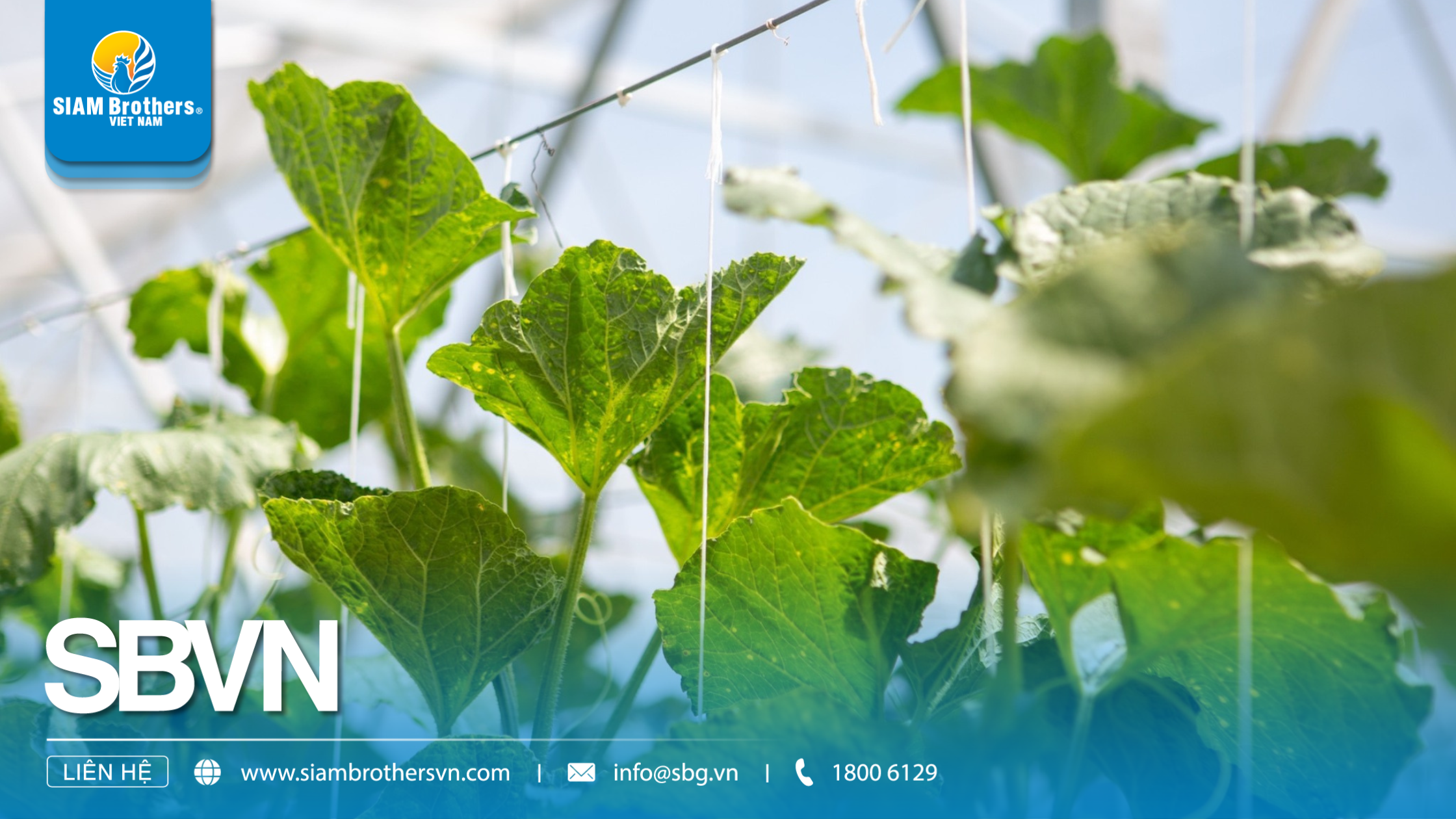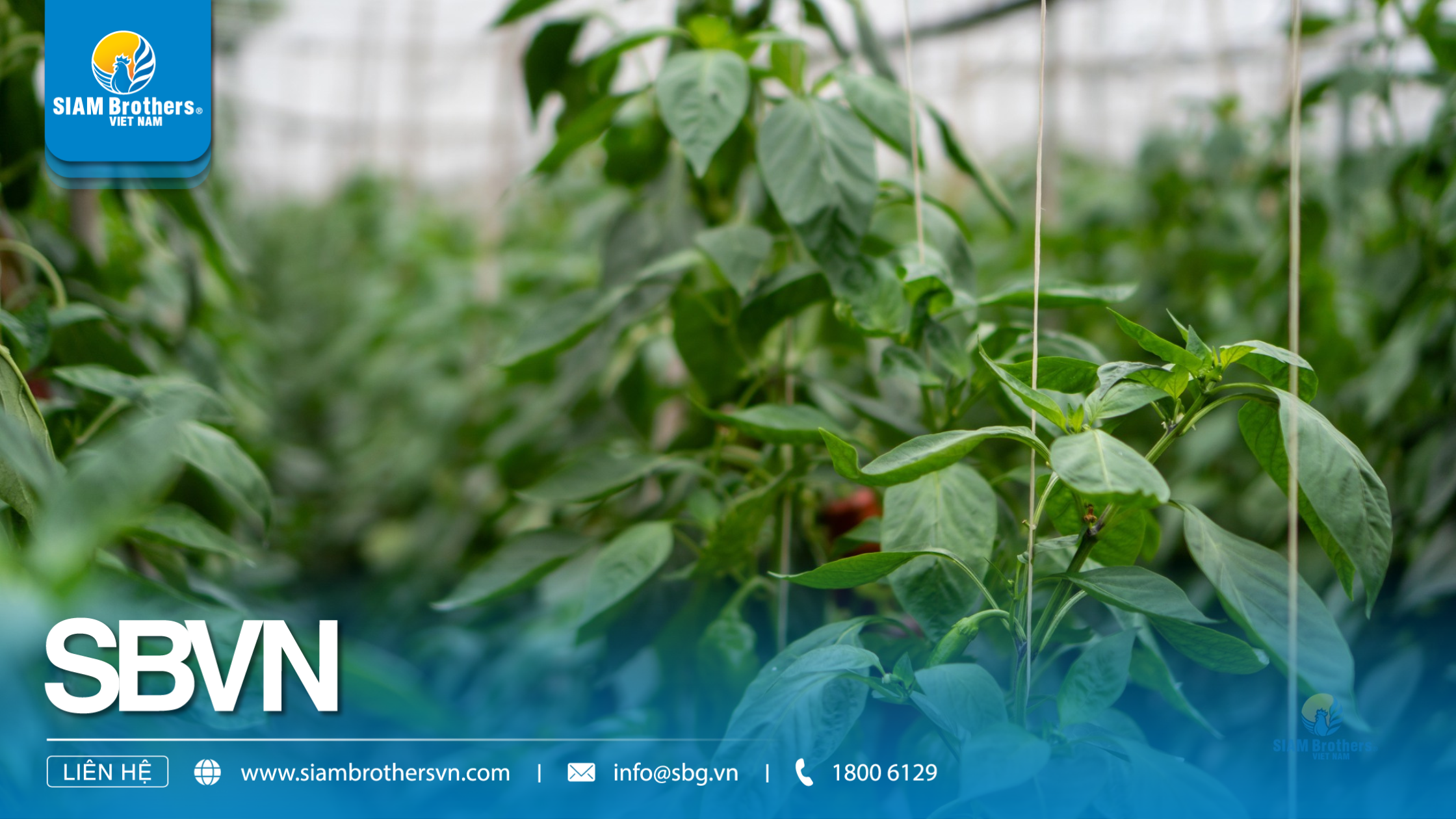Agricultural Twine is an essential material that helps farmers secure plants, build durable trellises, and protect crops against unpredictable weather conditions—yet not everyone knows how to choose and use it correctly. This article provides practical, easy-to-apply guidance for various farming models, from vegetables and fruit trees to large-scale agricultural operations across Vietnam. With hands-on experience and deep understanding of PP, PE, and Nylon characteristics, SIAM Brothers Vietnam helps growers select the right twine, tie plants without causing damage, reinforce trellises safely, and secure farming materials effectively during harsh weather. When used correctly, Agricultural Twine supports steady plant growth, minimizes damage, and enhances crop yield.
Agricultural Twine is a small-diameter cord made from PP, PE, or Nylon fibers, widely used for tying plants, building trellises, and securing materials in farming activities. This twine is lightweight, durable, moisture-resistant, chemical-resistant, and well-suited to Vietnam’s diverse climate conditions.
In practical farming, Agricultural Twine helps stabilize young plants, reduce branch breakage, strengthen trellis structures, and protect crops from harsh sunlight, strong winds, and heavy rains. Based on experience from SIAM Brothers Vietnam’s agricultural rope product lines, this twine is engineered to meet durability standards, ensure plant safety, and provide ease of handling for farmers.

Common Types of Agricultural Twine
• Lightweight with moderate elasticity, ideal for tying soft-stem plants or young crops.
• Cost-effective and easy to handle, suitable for vegetable farms or greenhouse cultivation.
• Higher durability than PP, strong tensile strength, and excellent UV resistance—ideal for outdoor trellis structures or securing materials.
• Popular in regions with intense sunlight due to its superior aging resistance.
• Exceptional elasticity and high load capacity, difficult to break under tension.
• Commonly used for fruit trees, heavy-bearing crops, or applications requiring strong support such as fruit-lifting trellises and anchoring stakes during rainy seasons.
• Agricultural Twine is widely used to stabilize seedlings, helping them grow upright and resist wind damage.
• When tied correctly, it minimizes bark injury—especially important for vegetables, soft-stem crops, and young fruit trees.
• Essential for constructing trellises for gourds, squash, cucumbers, beans, and other climbing species.
• Lightweight yet durable, the twine forms stable trellis structures that support climbing growth and distribute weight evenly.
• Proper twine selection improves yield, reduces branch breakage, and adapts well to farming conditions across southern, central, and northern Vietnam.
• Used in orchards to hang fruit-protection bags for mango, pomelo, rambutan, citrus, and more.
• Its elasticity and load-bearing strength help reduce fruit drop during windy seasons and minimize strain on branches during peak harvest.
• Correct usage protects fruit quality, reduces impact damage, and increases market value.
• Agricultural Twine is effective for fastening shade nets, rain covers, and windbreak nets in outdoor farming models.
• Its moisture resistance, chemical resistance, and heat tolerance make it reliable in harsh environments.
• Essential for regions with unstable climates, especially the Mekong Delta and coastal areas affected by storms.

• Used for bundling vegetables, securing crates, or tying produce bags during transportation.
• High durability reduces breakage, prevents crop loss, and maintains product quality throughout delivery.
• A cost-efficient solution for cooperatives and professional farms.
• With years of experience in rope and agricultural material manufacturing, SIAM Brothers Vietnam provides twine with high durability, UV resistance, and optimized performance for multiple applications.
• All products are field-tested across different farming regions to ensure stable quality and maximum seasonal efficiency for growers.
• Prioritize soft, smooth twine to minimize friction and prevent damage to young plant stems.
• Choose twine with light elasticity to allow natural plant growth.
• For long-term crops, select high-durability Agricultural Twine capable of maintaining stability over extended periods.
• The twine should be water-resistant and UV-resistant to withstand outdoor weather conditions.
• Use twine with a larger diameter to support heavy fruits or trellis structures.
• Opt for tightly twisted twine that maintains shape and stability when tensioned.
• Select rot-resistant, non-absorbent twine to prolong the lifespan of outdoor trellises.
• For greenhouse trellises, choose low-stretch twine to maintain straight and stable vertical lines.

3.3.1. Twine for Humid or Water-Exposed Environments
• Choose twine with excellent moisture resistance and non-degrading properties during prolonged soaking.
• PP and PE Agricultural Twine performs well in hydroponics, aquaculture areas, and high-humidity greenhouses.
• Prioritize twine with UV-stabilized additives.
• Choose heat-resistant twine that does not become brittle or break under long hours of direct sunlight.
• Select twine with consistent quality and uniform twist for secure knotting.
• Ensure clear tensile strength specifications to meet the needs of large-scale and professional farms.

To prevent stem breakage, leaning, or bark damage, growers can follow these guidelines:
• Wrap the twine loosely around the stem to avoid restricting growth.
• Create a small buffer space between the twine and the stem to reduce abrasion during strong winds.
• For young plants, use soft, flexible Agricultural Twine to protect tender bark.
• For perennial crops, use a figure-eight tying method to improve stability and reduce pressure points.
• Inspect the tied areas every 7–10 days and loosen the twine as the plant grows.
A strong and stable trellis improves airflow, light exposure, and disease prevention. Recommended practices include:
• Stretch twine vertically to help plants climb steadily and reduce twisting.
• For heavy-fruit crops, add diagonal twine or anchoring points to reduce load on the main structure.
• In greenhouses, choose low-stretch Agricultural Twine to maintain consistent trellis height as plants grow rapidly.
• Space twine lines evenly to guide climbing plants and simplify maintenance.
• Tighten knots periodically to maintain proper tension in the trellis.
During flowering, fruit formation, or adverse weather, proper twine application is essential:
• Use twine to support heavily loaded branches to prevent bending, breakage, or fruit touching the soil.
• Secure plant stems during strong-wind forecasts to reduce widespread lodging.
• Fasten sun-shade nets or rain covers to protect blossoms and young fruit from sudden weather changes.
• For leafy vegetables, use twine to gather rows neatly for uniform harvesting.
• During internal transport on the farm, tie produce into moderate bundles to minimize loss and maintain quality.


Agricultural Twine plays a vital role in stabilizing plants, building trellises, and protecting seasonal crops against weather-related stress, helping growers increase productivity and reduce losses. By choosing the right type of twine, applying proper tying techniques, and maintaining it correctly, farmers can optimize performance across various cultivation models. From securing young plants and guiding climbing crops to fastening produce after harvest, Agricultural Twine remains an essential material for every farm. If you are looking for durable, high-quality twine that meets the demands of Vietnam’s tropical climate, contact SIAM Brothers Vietnam for detailed consultation and the most effective solutions for your growing seasons.
Source: SIAM Brothers Vietnam
Contact us:
► Address: 5th floor, VRG Building, 177 Hai Ba Trung Street., Xuan Hoa Ward, Ho Chi Minh City, Vietnam
► Hotline: 1800 6129
► Tel: (+84) 28 38 912 889
► Email: info@sbg.vn
► Follow us for more details at: Facebook - Zalo OA - Tiktok - Youtube - LinkedIn
Download SBVN ID app here:
► CHPlay
► Appstore